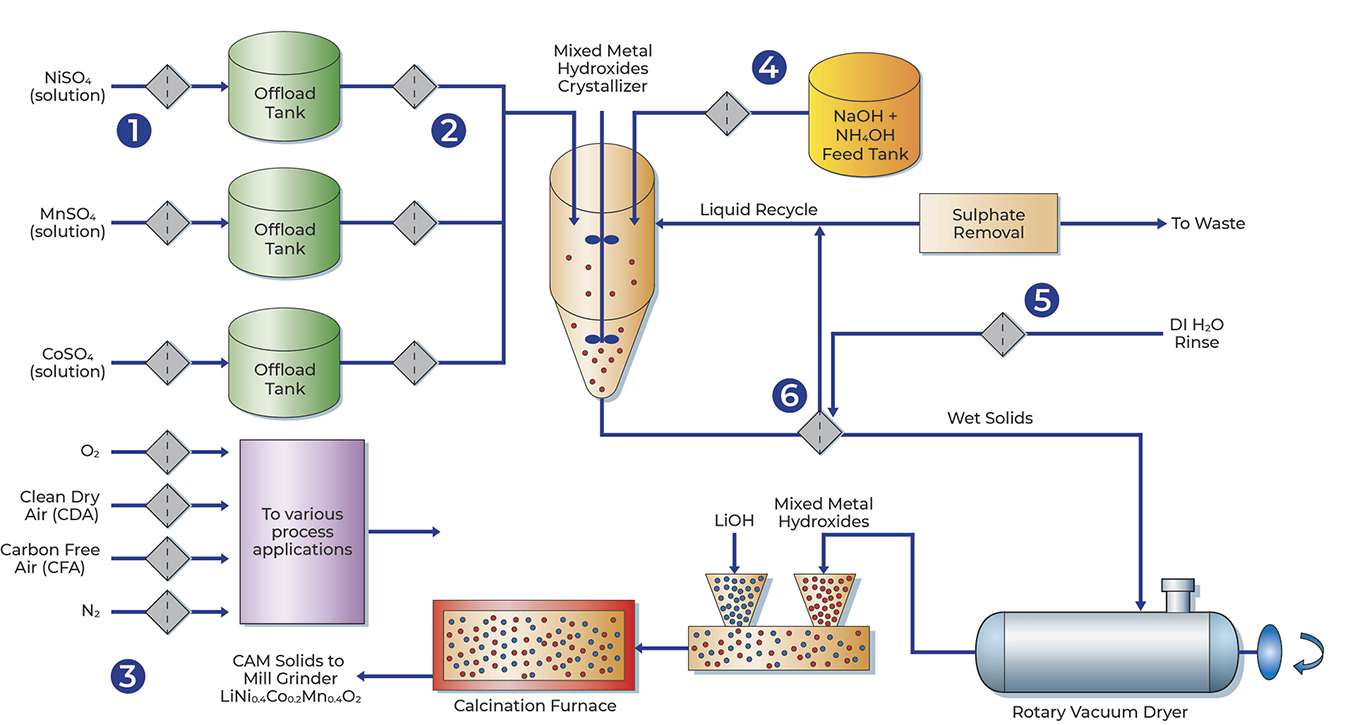Contact Us
Cathode-active materials (CAM) are pivotal in determining battery performance, cost, and lifespan. As the battery technology industry expands and environmental concerns rise, CAM manufacturers are under increasing pressure to enhance sustainability while maintaining superior product quality. A significant challenge in the production process of CAM involves the purification of gas streams, such as O2 and N2, which are essential for various manufacturing stages. Clean Dry Air (CDA) is vital for transporting active materials within different process lines to meet stringent purity requirements. This case study explores how Pall Corporation's advanced filtration solutions addressed the pain points of a major chemical company constructing a new manufacturing plant for pure cathode-active materials.
-
Challenge
-
Solution
A major company was setting up a new manufacturing plant and needed to install appropriate filtration solutions on its gas circuits. These circuits are integral to feeding multiple processing lines that produce pure cathode-active materials (CAM). The company faced several challenges:
High Purity Requirements: The CAM production process demands extremely high gas purity levels for transporting solids, which is crucial for optimal battery performance.
Pressure Constraints: Limited available pressure in the process necessitates the use of highly efficient particulate filters with low differential pressure (pressure drop).
Frequent Filter Changeouts: Existing filters cause a higher differential pressure, leading to more frequent filter replacements, increased downtime, and higher operational costs.
Inconsistent Quality: The current filtration solution failed to consistently meet the high gas purity standards required, affecting the overall quality of the CAM and ultimately, the performance of the batteries.
Pall Advanced Filtration Products
Pall offered a comprehensive range of purification and filtration products designed to address the customer's challenges. The key benefits of Pall’s solutions included:
Lower Differential Pressure: Pall’s filters provided a significantly lower differential pressure resulting in a longer filter service life and reduced the frequency of filter changeouts, thereby lowering operational costs.
Enhanced Purity and Performance: Pall’s advanced filtration solutions ensured higher levels of gas purity, which were essential for meeting the customer’s stringent requirements. This helped achieve the desired crystal size, remove contaminants, and enable producers to meet cell assembly specifications.
Increased Production Yields: Pall’s filtration solutions enhanced product purity through optimized manufacturing processes, resulting in increased production yields and better battery performance.
Conclusion
Implementing Pall’s advanced filtration solutions successfully addressed the major company's pain points in its new CAM manufacturing plant. The lower level of differential pressure through the filter provided a longer filter service life and reduced operational costs, while the enhanced purity ensured optimal battery performance.
Pall’s collaborative approach with the customer’s vessel supplier and comprehensive range of purification products significantly improved the overall efficiency and sustainability of the CAM production process. This case study highlights the critical role of advanced filtration solutions in meeting the evolving demands of the battery technology industry.
Learn more about the solution that can support your applications or contact an expert today.




